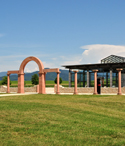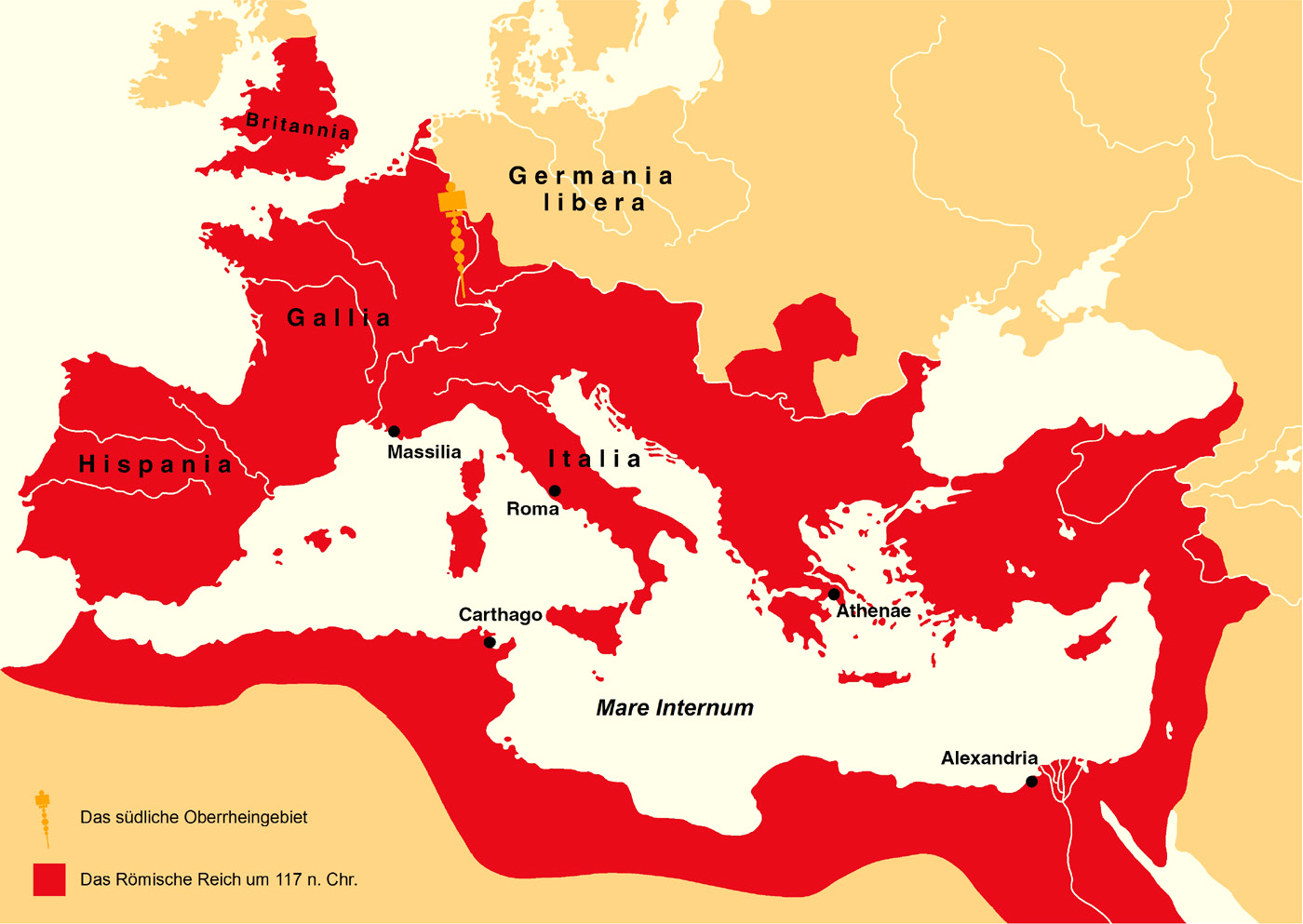About the Roman history of the region
The southern Upper Rhine region is an old Roman arable land. During the reign of Gaius Julius Caesar the Rhine became the Roman imperial frontier. In the early 1st century the territories on the eastern bank of the Rhine river were secured by the Roman military. There were military bases in Riegel at the northern edge of the Kaiserstuhl and on the Limberg close to Sasbach and nearby Offenburg. Along the long-distance road from Augst to Mainz Roman service areas had been installed close to Herbolzheim, Friesenheim and Hohberg-Niederschopfheim.
Within the Roman Empire the Upper Rhine region became densely populated by civilians. First, Roman farms had been built close to Grenzach, Auggen and Heitersheim and later they were extended to enormous estates. Numerous estates were discovered along the Upper Rhine; e. g. nearby Wyhlen, Rheinfelden-Nollingen and Lörrach-Brombach, Fischingen, Efringen-Kirchen and Kenzingen. At that time, larger settlements had been built in Bad Krozingen, Lahr and Offenburg. Remains of the Roman iron ore mining industry were discovered close to Bad Bellingen, Schliengen, Ringsheim, Ettenheim and Mahlberg. A curative spring was the origin of Badenweiler’s settlement. Subsequently, around this spring the Romans built up the biggest thermal spa on the right bank of the Rhine river. The colony of Riegel was an administrative centre with an important market basilica.
After having lost the territory of the Province Germania Superior on the right bank of the Rhine river in the 3rd century, the Romans fortified the Rhine frontier again. In the 4th century they built Roman fortifications along the Rhine river; e. g. the bridge castle nearby Wyhlen, the fort on the Münsterberg in Breisach and the fortlet in Jechtingen. This Danube-Iller-Rhine Limes, constructed in the late antiquity, represented the last Roman frontier in this region and it was in existence until the 5th century.






